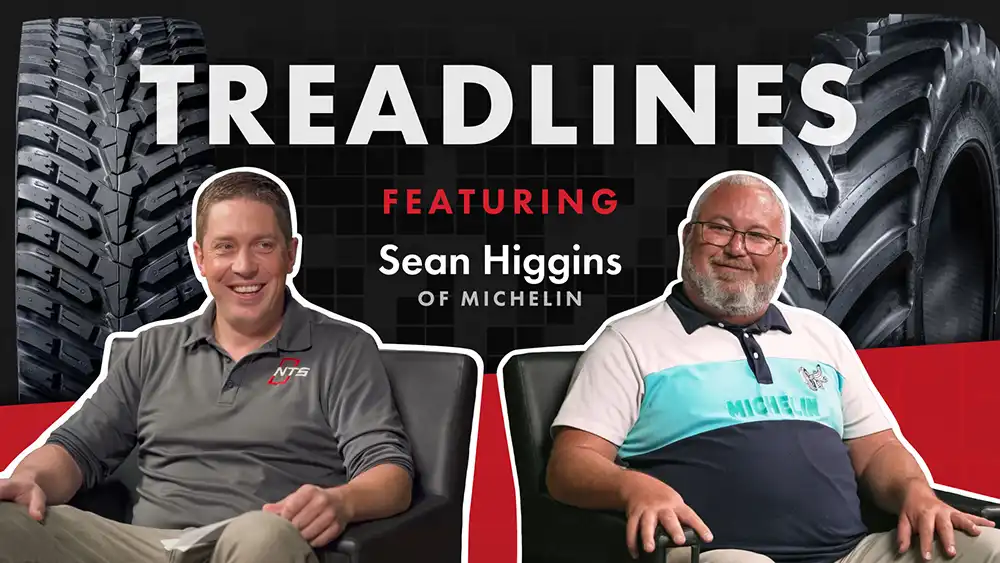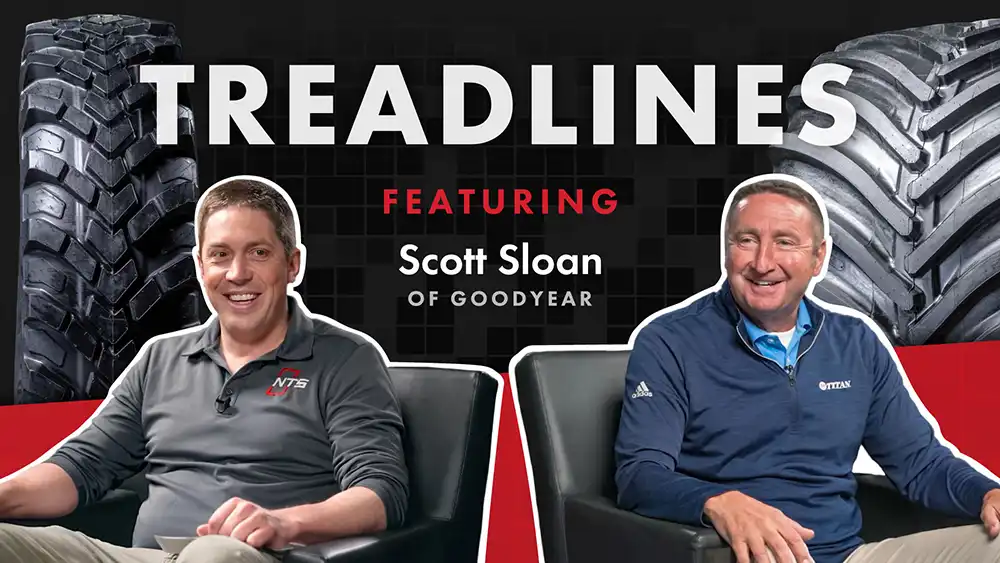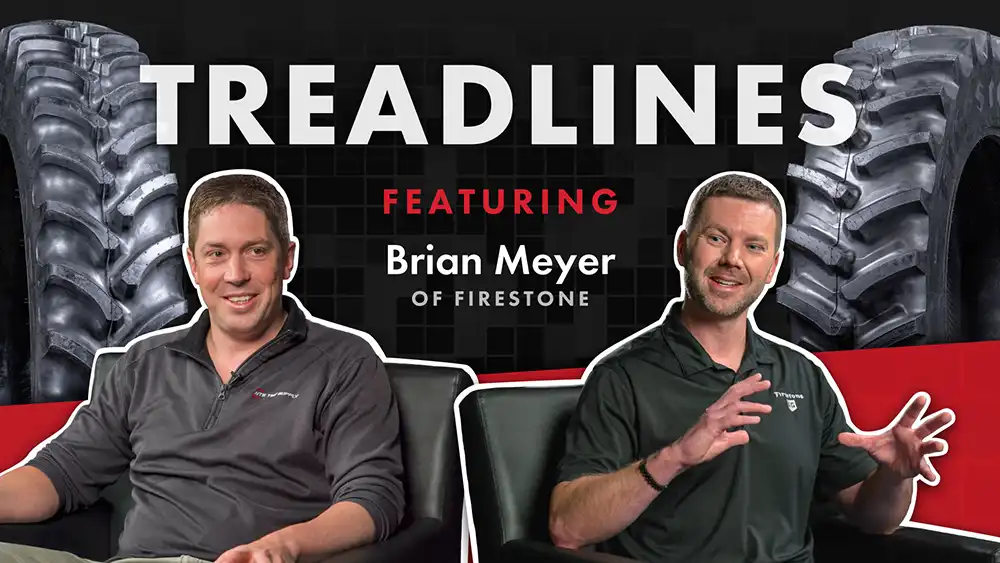Driven by the need to plant, harvest, and till acres efficiently while racing the weather, today’s massive machines are designed to help you finish fieldwork as quickly as possible. But, due to their weight, they also cause compaction, which can damage your crops and your bottom line.

25% or More of Your Crop May be Affected by Pinch Rows
Pinch-row compaction is specific to today’s large center-fill planters. The “pinch rows” are the center six rows beside the transport tires and beneath the center of the planter. On a 24-row planter, this means that 25% of the rows are pinch rows. On a 12-row center-fill planter, 50% are pinch rows. Have a 36-row planter? Almost 17% are pinch rows.
Compaction makes it harder for oxygen, water, and nutrients to reach plant roots. Pinch rows often curb root development, too. All this adds up to lower yields at harvest time. But there are several tactics you can use to alleviate the effects of pinch row compaction.
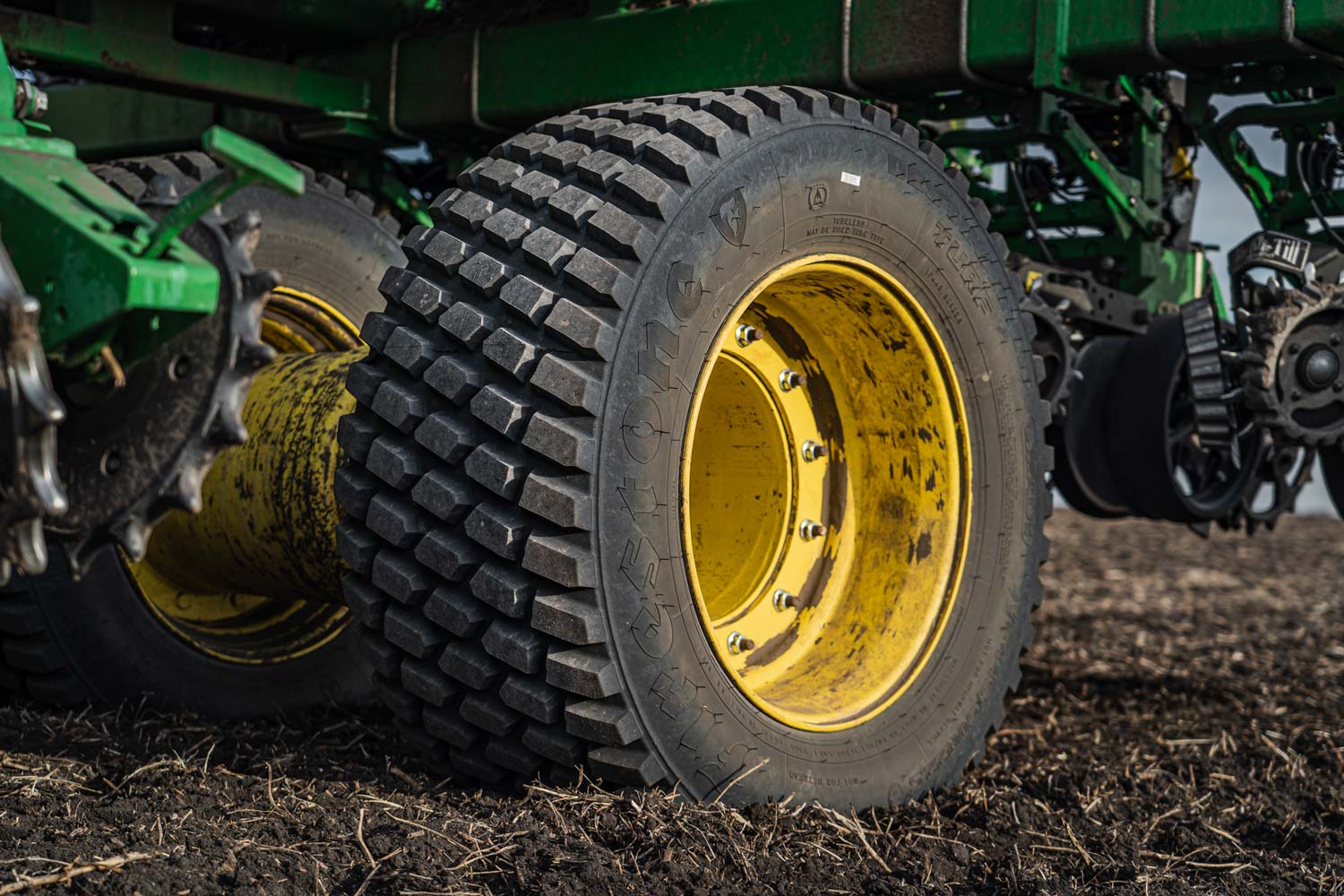
1. IF/VF Planter Tires
When center-fill planters first arrived on the market, many came from the factory wearing super-single truck tires. Why? Because these tires can support an enormous amount of weight. Plus, they’re durable. However, these tires require ultra-high air pressures (100+ psi) to safely carry the weight of these massive planters down the road. That same 100 psi will wreak havoc in your fields by causing deep soil compaction.
High Tire Pressure = Smaller Tire Footprints + Smaller Yields
As you increase a tire’s air pressure, you decrease its footprint size. Smaller tire footprints translate to increased pressure on the soil. From a distance, you can probably see the tracks that these tires leave behind. You may even be able to follow these same tracks with your sprayer weeks later without having to consult your GPS monitor.
Fight Compaction and Boost Yields with VF Tire Technology
Most (if not all) center-fill planters now come straight from the factory with VF-rated radial transport tires. If your planter is still wearing good-old super-single truck tires, VF (very increased flexion) radial tires will carry the weight of your planter at up to 40% lower air pressure than those truck tires. Lower air pressure gives your planter a larger footprint to help spread out the pressure it's placing on your soil.
Learn More: Our Top 5 Planter Tires That Fight Compaction

2. Central Tire Inflation Systems
Replacing your planter’s super-single truck tires is a good first step toward alleviating pinch row compaction. But you’re still left with one big problem if you have to do a lot of roading with your planter:
- For example: you may need to inflate your planter’s tires to 85 psi or more to safely handle road speeds.
- Those same tires may only require 30 psi to safely support the planter’s weight in the field, since you’re operating at a much slower speed and with the planter unfolded. But 30 psi would never cut it for high-speed road travel, unless you like guzzling fuel and destroying tires at the same time.
So what do you do? Pick a pressure somewhere between those examples, say 50 psi? On the road, that pressure is dangerously low. And in the field, you won’t see any useful benefit in your fight against compaction either because the pressure’s still too high. If you want to solve this problem, invest in a central tire inflation system.
Get Complete Control of Your Tires’ Performance
With a central tire inflation system, you can set the tire pressure on your planter at the touch of a button. Inflate to maximum psi for safe, efficient road travel. Deflate your tires to their minimum safe pressure (based on load and speed) to maximize your footprint in the field. Interested? Contact NTS Tire Supply and ask to speak with a CTIS specialist.
Learn More: Why you need a central tire inflation system for your planter.
.jpeg)
3. Aftermarket Tracks
You can replace the main transport tires on several center-fill planter models with aftermarket track systems. Installation can take 4 to 5 hours or more depending on the setup of your planter. According to a study by The Ohio State University, a planter track system can increase yields by up to 10 bushels per acre when compared to a similar planter equipped with stock tires.
Read the Study: Ohio State evaluates tracks & wing downforce for planting.
The track systems do put down larger footprints than tires, and the track manufacturers point out that tracks don’t dig ruts or form berms when turning on headlands. However, there are two things to keep in mind: Track systems will cost more than a good VF tire setup for your planter. And be sure to understand the maintenance costs and upkeep of any track system before you buy.
Here are a few popular track systems for planters:
- Soucy: S-Tech 012P for Planters
- Camso: Camso Trailed Track Systems
- Gramlo Ltd: Gramlo Track Kits
.jpeg)
4. Hydraulic Weight Transfer Systems
These systems work to better distribute the weight of the planter across the entire planter bar using hydraulic cylinders and a control system. The base end of the cylinders are connected to the center frame and the rod end is connected to the wing. They transfer weight from the planter’s center section to the wings. For example, according to Kinzie, the company’s OEM hydraulic weight transfer system reduces the center section weight from approximately 6,000 pounds to 2,250 pounds. These systems also help the planter’s wings stay in the ground for a more uniform planting depth.
There are a couple aftermarket systems available for many popular planter models. In our conversations with farmers, we’ve generally heard that these systems are very effective.
- LDM Ag: Frame Weight Distribution Kits
- Martin Till: Hydraulic Frame Weight Distribution System
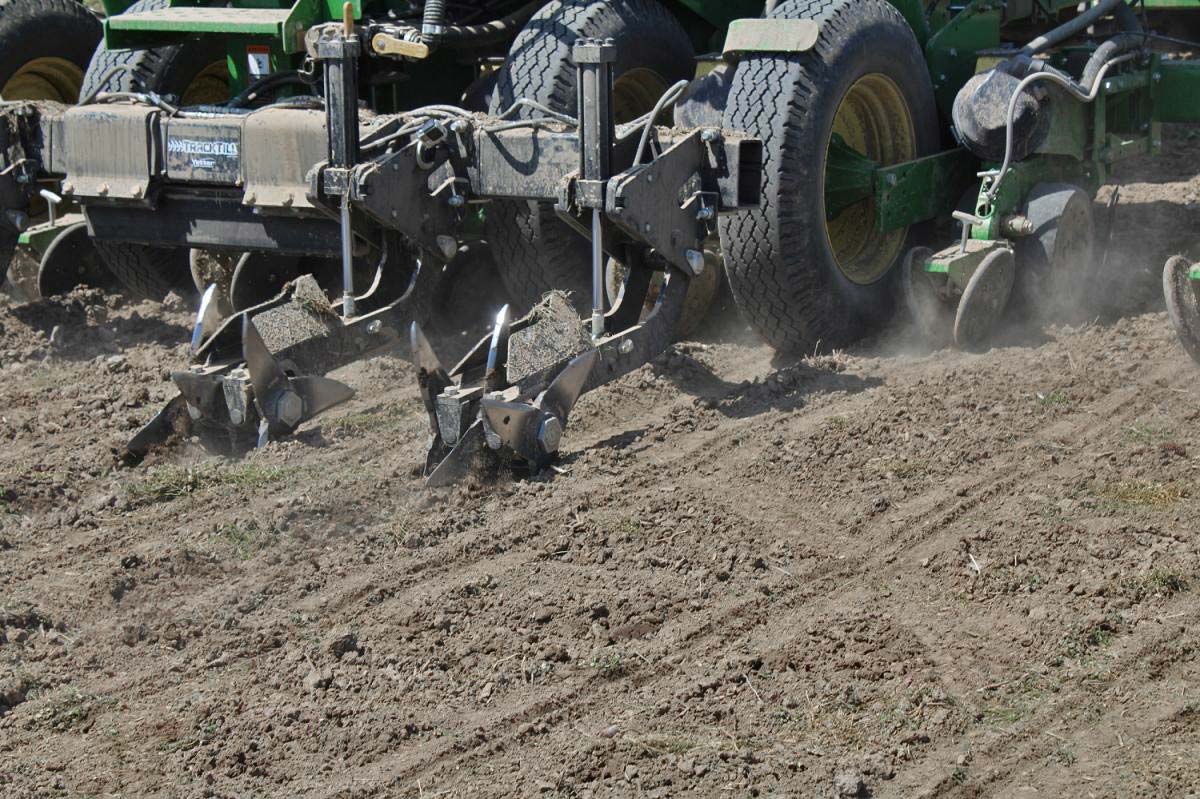
5. TrackTill® by Yetter
Yetter Farm Equipment’s Track Till® uses 10-inch ground-driven tines to fracture the compacted soil tracks left behind the transport tires. Supported by an adjustable hydraulic down pressure system, TrackTill either bolts directly to your planter or is attached with a bar kit. An Iowa State University study has shown an 8 bushel increase in the center rows and a 6.5% increase in corn plant height when the TrackTill is used.
Yetter Farm Equipment: Yetter 9010 TrackTill®
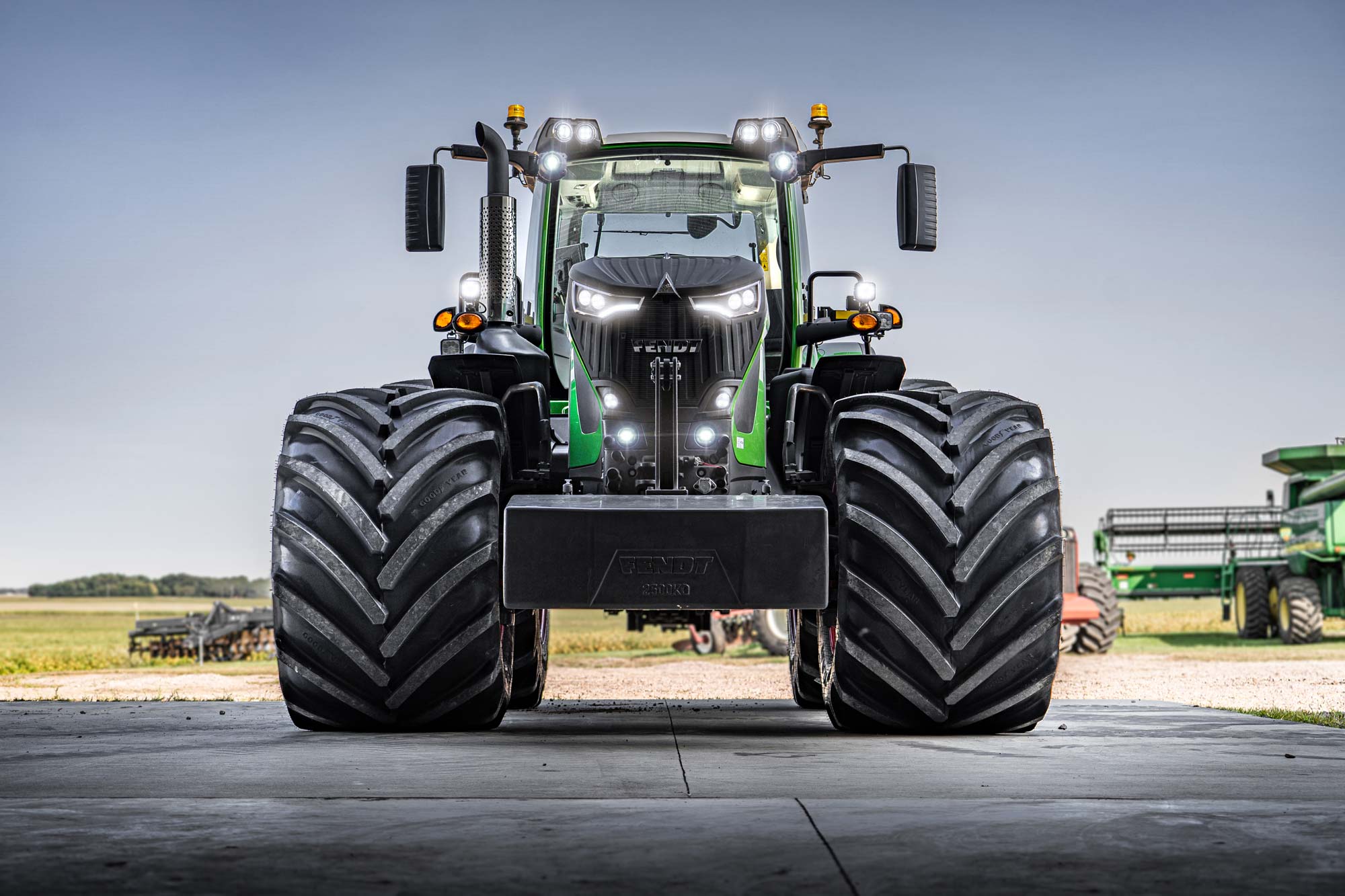
Don’t Forget Your Tractor
Your tractor is also putting pressure on your soil, but there are also strategies you can use to combat compaction from your workhorse.
IF/VF Tires
IF/VF radials put more tire—a larger footprint—on the ground compared to a standard radial thanks to lower air pressures and more sidewall flex. This larger footprint puts less pressure on your fields, which helps prevent deep-soil compaction from lowering your yields and profitability.
- IF radials can carry the same load as a standard radial at 20% less pressure.
- VF radials can carry the same load as a standard radial at 40% less pressure.
- Or, you can increase their maximum loads by 20% or 40% above a standard radial’s limits.
LSW Super Singles
At NTS Tire Supply, we’ve been selling Goodyear LSW super singles since 2017. Customers who buy them to replace traditional dual setups tend to love them. One place these massive tires shine is on planting tractors. Feedback from our customers has identified a few benefits of LSWs:
- Better traction through wet spots.
- More secure machine handling in the field and down the road.
- Higher fuel economy
- Less rutting and compaction.
In other words, swapping traditional dual setups for LSWs can lower your fuel bill, provide better traction, and help your tractor float instead of climbing out of its own ruts all day. In 2018 we partnered with AgRevival research to test the effects of planting behind LSWs. One of the setups we tested even helped eliminate the pinch row effect and showed a slight yield increase.
Learn More: NTS studies the effects of planting behind Goodyear LSWs.
Central Tire Inflation System
As we mentioned above for your planter, running at one tire pressure for both road and field could be costing you money. The field is where a central tire inflation system really counts, because it’s where you make your money. When you run your tractor’s tires at their minimum safe psi (for the load and speed, according to your tire manufacturer), you’ll maximize your grip, minimize soil compaction, and return more dollars per acre to your farm in profit. For the road, you can inflate your tires to their maximum PSI and improve your tractor’s road performance—increase fuel economy, improve handling, and decrease tire wear.
Learn More: Pull harder, fight compaction, and burn less fuel with a central tire inflation system..
Fight Compaction to Drive Your Farm Forward
Every farm is unique, which is why NTS Tire Supply offers a comprehensive range of farm tire and track solutions. Call one of our traction experts to inquire about IF/VF tires, central tire inflation systems, or Goodyear LSW super singles and Drive Your Farm Forward this spring.

.png)
.jpg)




